Children (especially very young children) are susceptible to various diseases, so if red spots and rashes appear on the body, you should immediately pay attention to this symptom in order to determine a possible pathology. There are many questions. Why did the rash occur, how to treat red spots, how to protect the child from complications and serious consequences? You can figure out what's going on before going to the doctor. So why do red spots appear on a baby’s body? Causes and treatment options are listed below.
Allergic reaction
Red spots on the body of a baby (photo below) immediately suggest a food allergy. In most cases, the cause of the rash is indeed inappropriate food: formula or something in the diet of a nursing mother. Sometimes a small rash signals an allergy to household chemicals. The main allergens are eggs, dairy products, seafood, citrus fruits, chocolate, mushrooms, honey. By the way, Komarovsky calls allergies the most common reason for the appearance of red spots on the body of an infant.
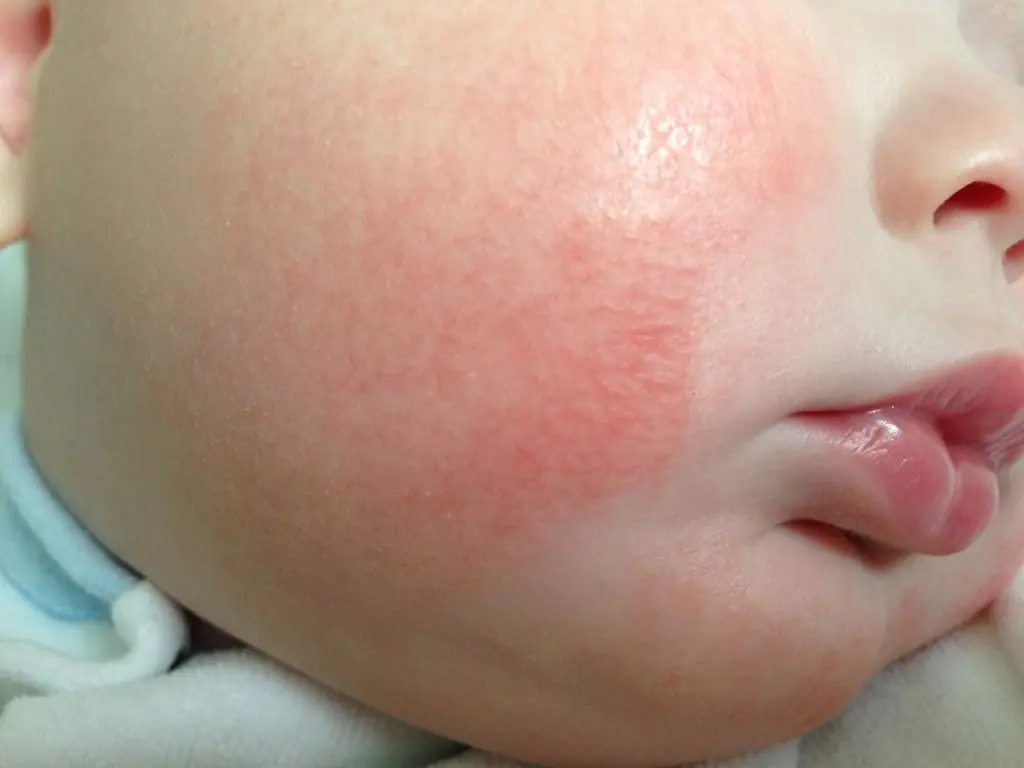
It is necessary to avoid prolonged contact of the baby's skin with synthetics or chemical detergents. But an allergic reaction is an extremely individual concept, so you need to observe the body’s reaction when introducing new food products into the diet or purchasing household chemicals that have not been used before.
Allergic reactions include eczema and hives. If red, rough spots appear on the baby’s body, then most likely we are talking about eczema. The lesions expand because the bubbles burst. Such areas burn, itch and cause severe discomfort in the child. Hives cause blisters that itch. When pressed, small white dots are visible.
Infectious diseases
Another type of red spots on the body of a baby can be caused by infectious diseases, which are very specific and require special treatment and care for a sick child. Diseases of this type include chicken pox, scarlet fever, rubella, and measles.

With chickenpox, red spots on the baby's body are large in size, and later they turn into bursting blisters. Then red dots appear, bursting blisters, severe itching, weakness, and sometimes there may be a fever. Often spots appear on the cheeks, in the spaces between the fingers and under the armpits. Chickenpox is easier to tolerate in childhood, but treatment should be started on time.
The development of streptococcal infection is accompanied by red spots on the baby's body in the armpits, groin and face (except for the nasolabial area). Scarlet fever is characterized by severe peeling of the affected areas and sore throat. The skin begins to peel two days after the first signs of the disease appear. Treatment is with antibiotics. The disease is transmitted, so if there is another child in the family, then you need to isolate him from contact with the infected person. Scarlet fever is transmitted by airborne droplets or is provoked by non-compliance with personal hygiene rules. The disease can be transmitted by dirty toys, household items or clothing, unwashed vegetables and fruits.
Measles is transmitted through touch, that is, tactilely. Red dry spots on the baby's body appear after a runny nose, cough and high fever. Skin reactions can be detected only on the 3-4th day of illness. At the same time, there is a fear of light and direct sunlight. The rash turns from red to brown, then begins to peel and disappears. The affected areas have an irregular shape. The rash can appear on different parts of the body. Treatment on average takes about two weeks.
The cause of red spots on the body of a baby may be rubella. In the normal course, the disease does not last long. The infection is transmitted by airborne droplets. Headache, conjunctivitis, and sore throat appear. Typical affected areas: chest, face, back. The child will become irritable and whiny, may refuse food, and have trouble sleeping. Pink spots appear a week after infection.
Heat rash and diaper rash
Red spots on a baby's body after bathing can be especially clearly visible. If there are no other signs of deterioration in your health, then most likely it is common heat rash. During the hot season or with intense sweating, a small red rash may appear in the folds. To avoid this unpleasant symptom, bathing should be done more often. The child should buy clothes made from natural materials, stop using oily skin care products, and often leave the baby naked so that the skin can “breathe.”
Diaper rash can appear as red patches that resemble dropsy. They can occur due to sweat and high ambient temperatures. Red spots appear on the baby's body (without fever, only general weakness is characteristic); they can usually be seen in the area of the buttocks, neck and chin, and skin folds. For prickly heat and diaper rash, it is necessary to constantly keep the skin clean and fresh, carry out air baths and follow the rules of hygiene.
Insect bites
Red spots on a baby's body may appear due to insect bites, such as mosquitoes. The bites are similar to an allergic reaction. The affected areas are very itchy, cause increased irritability and anxiety in the child, and may be hot compared to other areas of the skin. Severe itching can be relieved with special ointments, gels or creams labeled 0+. Older children often scratch their bites, so the affected area should be treated with brilliant green. To prevent an allergic reaction, you need to give your child an antihistamine.
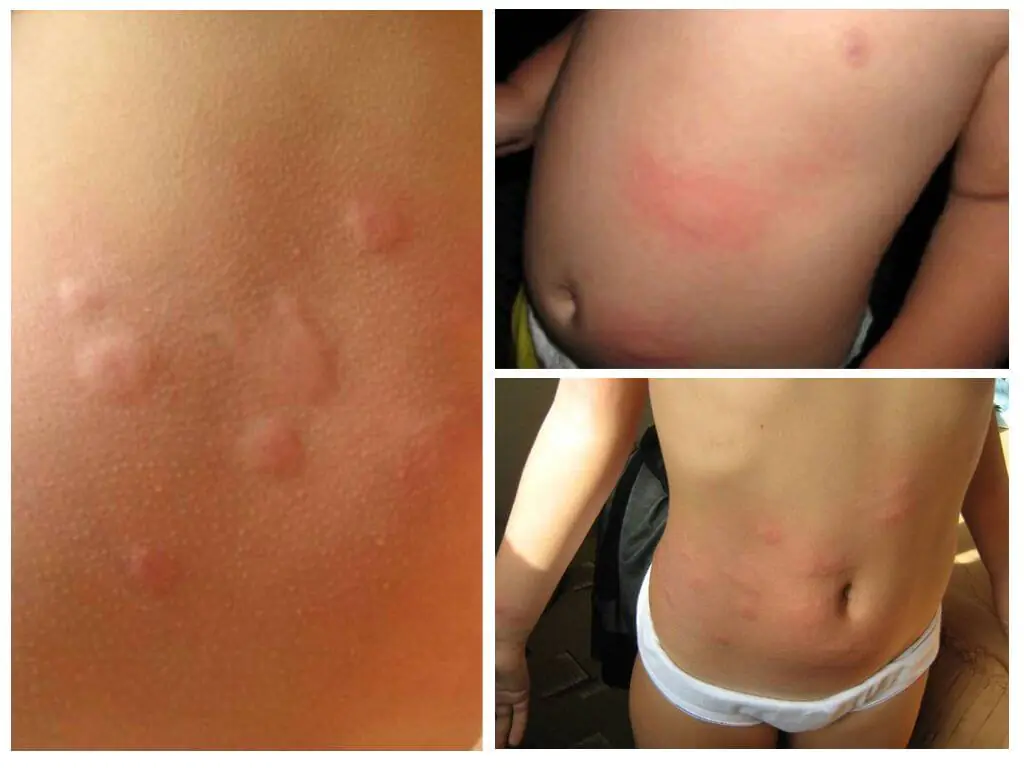
Dermatological diseases
Dermatoses, or pustular lesions, are accompanied by itching and red spots on the baby’s body. It is difficult to make a diagnosis from a photo even for a professional, let alone for people far from medicine, so to determine the causative agent you need to undergo tests. Viral dermatosis is usually diagnosed in children aged five to eight years. Dermatosis is caused by intracellular viruses, which manifest themselves in the form of herpes, condylomas, warts, and molluscum contagiosum. The disease is accompanied by general weakness, fever, peeling of the skin, and itching. For children with dermatosis, proper nutrition and hygiene are very important. The exact causes of the disease will be revealed by examinations and tests.

If red spots on a baby’s body turn into purulent blisters, this indicates infantile pyoderma. There are lichen sicca, diaper dermatitis and streptococcal pyoderma. Treatment is prescribed only by a doctor. Timely and adequate therapy will help get rid of the consequences, because such diseases have a negative impact on the body as a whole.
For itching and peeling
What to do if the rashes flake and itch? An older child may complain of itching, but a baby will simply behave anxiously, fidget in the crib, may cry or refuse to eat. Constant scratching irritates the baby, which affects his general well-being. In this case, you can try making soothing compresses. For compresses, decoctions of chamomile, calendula, and celandine are used. A cotton swab, a piece of gauze or a clean cloth is moistened in the cooled broth and then applied to the affected areas. Products for newborns should not include alcohol or drying ingredients, which will only increase peeling. In addition, do not rub the affected areas.

In what cases should you consult a doctor?
If there are any rashes, the baby must be examined in the hospital. In some cases, you will need to visit a dermatologist, who will prescribe the necessary tests and carry out all diagnostic procedures. In mild cases, a visit to the pediatrician is sufficient. Any medications should only be prescribed by a doctor, otherwise the situation may not improve, but only get worse. An unpleasant symptom not only causes discomfort, but also generally negatively affects the body, so the child must be treated under the supervision of experienced doctors.
You should immediately consult a doctor if, along with the rash, you experience chest pain, difficulty breathing, elevated body temperature that is not controlled by antipyretic drugs, fainting, drowsiness, speech problems in older children, confusion, runny nose and inability to breathe normally. , anaphylactic shock. This may indicate a severe allergy or a complicated course of an infectious disease.

What not to do
Before visiting a doctor, you should not apply dyes to the rash, because this will complicate diagnosis. You cannot take a child to the hospital if there is a suspicion that the disease is infectious in nature. Such diseases are transmitted by airborne droplets, so there is a risk of infecting other children. Therefore, you need to call an ambulance or a doctor at home. Any rashes on the body should not be scratched. This is especially true for infectious diseases that are accompanied by severe itching. Do not give your child any medications without consulting a doctor. It is allowed to use only antihistamines for an allergic reaction, but only those that the child has already taken before.
Methods and rules of treatment
Red, rough spots on the body of a baby and any other rashes should be treated only under the supervision of a doctor. In case of an allergic reaction, it is necessary to identify the allergen and quickly treat with antihistamines, but chickenpox is treated mainly symptomatically. For measles, bed rest is indicated, you need to wash your eyes several times a day, if necessary, give your child an antipyretic, if you have a severe cough, use mucolytics, and if you have a runny nose, wash your nose with sea salt sprays.
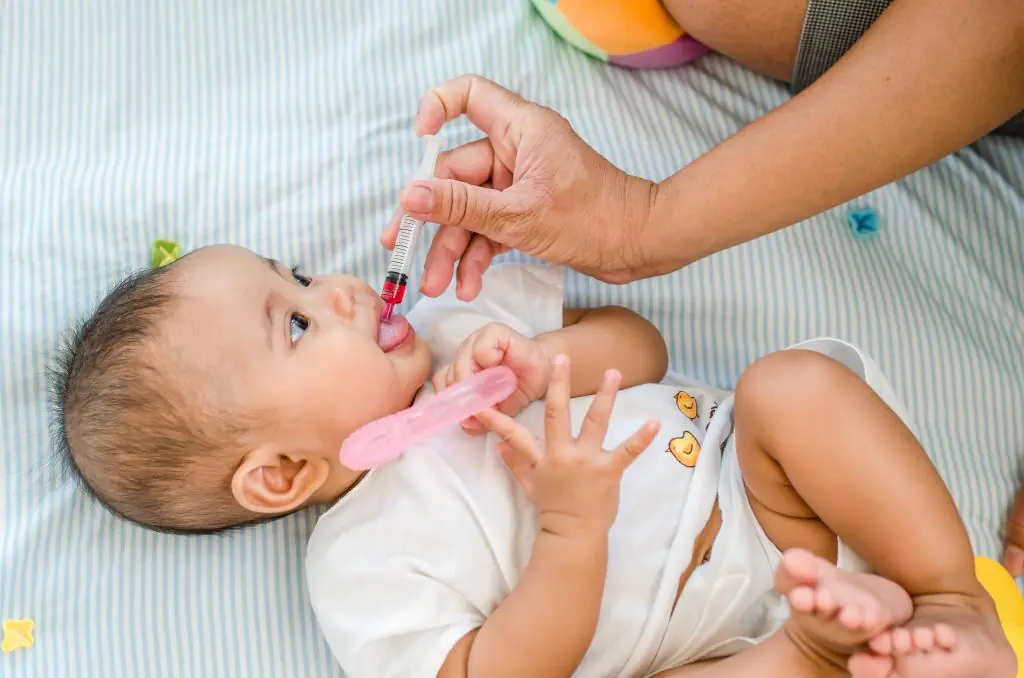
Hives are treated with medications. Mild laxatives and diuretics, small-volume cleansing enemas and antihistamines are prescribed. To normalize metabolic processes, it is advisable to use B vitamins and iron supplements. In chronic urticaria, it is important to identify and treat areas of infection. To relieve itching, chamomile-based baths, strings, creams and ointments based on glucocorticosteroids are actively used.
With dermatosis, you first need to eliminate the original source of the disease, and then begin drug treatment. After contact with the suspected allergen, you need to treat the skin with an antiseptic or simply wash it with soap and water. To relieve itching, swelling and prevent inflammation, you will need an antihistamine. For the first time, only a doctor should prescribe the medicine; in the future (if there was no adverse reaction), the same medicine can be given if allergies occur. To stop the local inflammatory process, ointments are used, and for weeping rashes, drying agents are needed. Infectious dermatoses are treated with antibacterial, antifungal or antiviral drugs.
Folk recipes
If the baby is covered with red spots (the whole body or individual areas), you need to show the child to the doctor, because at such a tender age, inexperienced parents can only do harm by using folk recipes. Any means of alternative medicine are allowed to be used only after consulting a pediatrician. In this case, you need to carefully monitor the child’s condition. If an adverse reaction occurs, treatment should be stopped and you should go back to the hospital so that the doctor can adjust the treatment regimen.
Decoctions of yarrow and celandine are quite effective. You need to mix the dry raw materials in equal parts (one tablespoon is enough), add a glass of water and leave for two hours. The finished product needs to be strained and cooled, and then the pulp should be applied to the areas with the rash. Lotions should be applied several times a day. One procedure lasts at least twenty minutes. Infusion of birch buds works well with inflammatory processes and redness. A tablespoon of dry raw material should be poured with one glass of boiling water, left for thirty minutes, and then moistened with gauze and applied to the spots on the child’s body.
Prevention measures
Every parent experiences a rash in their child. It is quite difficult to prevent the appearance of red spots on the baby’s skin, because it is difficult to protect the child from adverse factors. It is necessary to strengthen the immune system, give multivitamins from time to time, and strengthen the baby. A strong immune system will help the body cope with infections and quickly overcome diseases.
In addition, children are recommended to buy clothes only from natural materials and use special children's washing and bathing products. If you have a frequent allergic rash, you need to limit contact with allergens, keep your home clean (daily wet cleaning and ventilation), get rid of objects that attract dust, carefully care for your pets so that there is no hair on the floor, and observe hygienic requirements when caring for children.
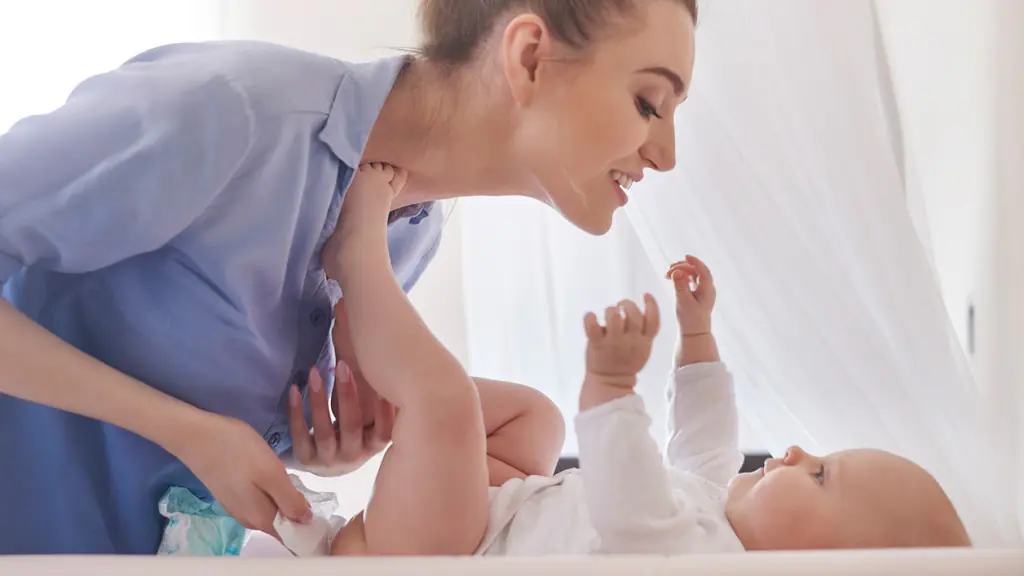
The appearance of a rash is in most cases a signal of a malfunction in the immune system. A negative reaction may occur due to the fault of parents who do not pay enough attention to the baby’s hygiene or cleanliness in the house, or offer the child products with an allergic effect. You need to be especially careful with children who are predisposed to adverse reactions to food, medications, animal dander, house dust, pollen, and so on.
Hemangiomas, birthmarks and age spots, diaper rash and prickly heat: what to do?
The skin of a newborn and a child in the first months of life reacts very vividly to everything - the nutrition of a nursing mother, the quality of the diaper, and even the air in the room. What spots and rashes on your baby's skin are normal, and what indicates poor care or ill health? With the help of our review, a young mother can easily figure out what's what.
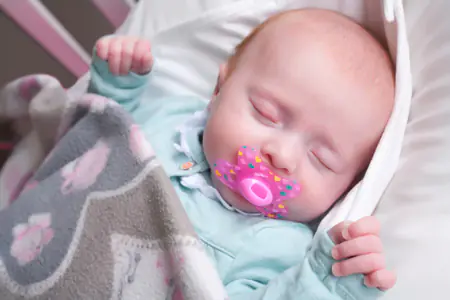
Skin spots
What to do if you notice an unknown spot on your baby’s skin? Be sure to contact your pediatrician: he will determine which category it belongs to and whether the child will need treatment. The spots that you may find on your baby's skin usually belong to one of the following groups.
Dark spots café au lait, round or irregular in shape. Usually they are not very noticeable, although sometimes they are the size of a five-ruble coin. Most likely, they will stay with the baby for life. If you notice more than five of these spots, consult a doctor.
Dark birthmarks spots - of various shapes, sometimes covered with hairs - can appear on any part of the body. They also last a lifetime and are usually no hassle. You should consult your doctor if they begin to change shape or grow.
Red birthmarks sometimes occur in newborns on the forehead, wings of the nose, eyelids, lips or on the back of the head. Their cause is the expansion of small blood vessels at the time of birth of the baby. If such formations are located symmetrically, for example on both eyelids or the wings of the nose, they will most likely disappear within a year. And spots that appear one by one can remain for life.
Mongoloid spot - a blue-purple mark on the lower back or bottom - usually found in children with dark skin. It does not require treatment and disappears by 12–15 years.
Hemangiomas - red spots, slightly protruding above the surface of the skin, which are formed from small blood vessels located close to each other. Hemangiomas are often mistaken for an ordinary birthmark (in medicine these are called capillary dysplasias), but the difference between them is that the spots do not grow. But a hemangioma can greatly increase in the first months of a baby’s life, slightly slowing down its growth by 5-6 months of age.
Hemangioma: diagnosis and treatment
Hemangiomas can occur on the body of babies in any place and even go deep into the skin. They come in a variety of sizes and shapes: round and elongated, like stars or spiders. Hemangiomas are treated much more often than other spots on the skin.
Hemangiomas can be flat or convex. Convex - soft red formations - form in the last weeks of pregnancy or immediately after the birth of the baby: a red dot appears on the skin, which quickly increases in size. The child does not experience any unpleasant sensations from the growing spots; some tumors disappear on their own by 2–3 years. But if the hemangioma is located in an awkward place, such as under a diaper, irritation may occur due to friction. As for flat formations, there are almost no problems with them; they do not grow, and therefore there is no need to treat them.
Most often, hemangiomas are harmless: the spot does not hurt, does not itch, and even if it appears on the eyelids, lips or tongue (and this also happens), it does not affect the functioning of the organ. But it happens that hemangiomas become inflamed and become infected. And the fact that the unpleasant spot is gradually increasing in size is a strong argument for parents to quickly begin treating the baby. After all, even doctors cannot predict how quickly and how much a hemangioma will grow.
There are two ways to get rid of a hemangioma: either remove it surgically (with a laser), or act on its cells so that they die on their own. The first method is used in difficult cases, for example, when the spot grows quickly or goes deep into the skin. In other situations, doctors will most likely try to freeze the hemangioma - this method is called cryotherapy and is now considered the most effective.
The treatment procedure lasts no more than a minute: using a special apparatus, a small disk cooled with liquid nitrogen is applied to the stain. Under the influence of cold (and the temperature of liquid nitrogen is minus 196 °C!) hemangioma tissue is destroyed in just 7–10 seconds if the spot is on the mucous membranes, and in 20–25 seconds if it is located on the skin.
After a few hours, a flat bubble appears at the site of the hemangioma, which is replaced by a dry crust on the 5th–7th day. It disappears on the 25-30th day, leaving a pink scar, which after 3-4 months becomes almost indistinguishable from healthy skin. Using this method, it is possible to get rid of a small hemangioma in just one session, and a large one - in several procedures.

Skin problems and their solutions
Redness on the cheeks or a rash on the bottom occurs at least occasionally in any baby. We will tell you what skin problems bother babies most often and how to help your baby.
Diaper rash. This is redness of the skin on the butt, around the anus, in the groin and between the buttocks. It occurs due to moisture and friction if the mother changes the diaper too rarely (the temperature in an overfilled diaper can reach +40 °C!).
You need to change the diaper every 3-4 hours, and after washing the baby, leave him naked for 10 minutes so that the skin can breathe. You can apply baby cream or powder to the reddened areas (you cannot combine both products!). If the damaged area begins to get wet, rinse it with a decoction of chamomile or bay leaf and lubricate it with a drying cream with zinc oxide.
Diaper (contact) dermatitis. The problem is more common among girls than boys; artificial babies, allergy sufferers. The appearance of pimples with a whitish liquid on the baby’s butt, genitals and thighs (and before that, redness, swelling and peeling are possible) may mean that the diaper or detergent used to wash the onesies is not suitable for him. Wash your butt several times a day with running water, wipe it dry and lubricate it with a drying cream. Do not use wet cleaning wipes or, in extreme cases, diapers.
Prickly heat. If the apartment is hot and the baby sweats a lot, then a small red rash appears on his shoulders, back, and in the folds of the skin (on the butt and groin). Heat rash indicates that the baby is overheating, and since the work of the sweat glands is not yet established until the age of 2, sweat accumulates and clogs the ducts of the glands. Open the baby often, rinse it with warm water, and dress it in cotton clothes. A cream with zinc oxide will help soothe the skin.
Fungal infection. Harmful microorganisms and fungi can get into the damaged areas - then round reddish spots with fringed edges, pustules or ulcers will appear on the baby’s skin. The doctor will prescribe a comprehensive treatment for the baby: ointment, antifungal drug, vitamins, and means to strengthen the immune system.
Hives. A scattering of reddish blisters on the skin itches and bothers the child. Most often, allergic reactions manifest themselves this way: to foods, medications, or synthetic clothing that are previously unfamiliar to the baby. Lubricate the skin with antiallergic ointment, and if the baby is very worried, you can give him an antiallergic drug, which the doctor will recommend.
Allergic diathesis. This is not a real allergy, but only a predisposition to it. Diathesis often begins in the 3rd month in overweight children. Crimson cheeks, a red scaly rash behind the ears, on the neck, and legs are its characteristic signs. In this case, if the mother is breastfeeding, she will have to exclude whole cow's milk, eggs, fish, honey, and citrus fruits.
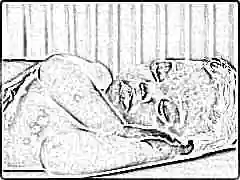
There should be no foreign spots on the child’s healthy skin. Their appearance usually indicates that some pathological disorders are occurring in the child’s body. This article will help you understand under what situations and diseases skin spots appear.
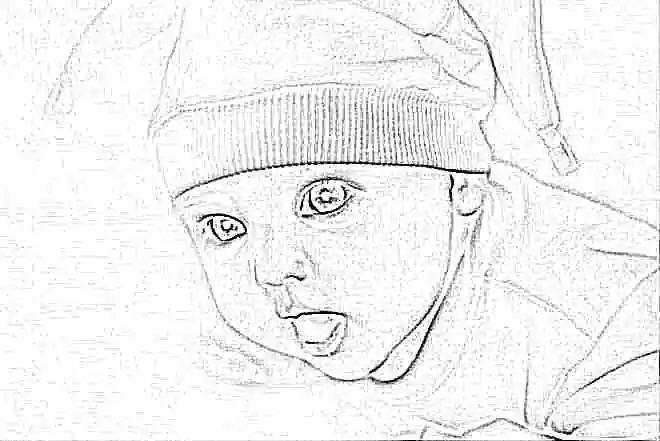
Causes
The physiological color of the skin is pale pink. A newborn baby’s skin is quite delicate, and blood vessels are clearly visible through them. Infants' skin is sufficiently moisturized.
The appearance of various rashes on the skin most often indicates the occurrence of a pathological process.
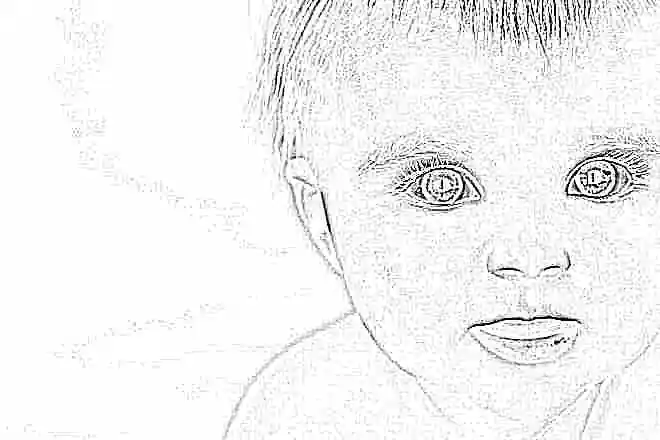
The following reasons can lead to the appearance of spots on the baby’s skin:
- Disruption of the endocrine system. For the full growth and development of a child, a wide variety of hormones are required. A malfunction of the endocrine system contributes to the appearance of various red spots on the skin. They may feel rough to the touch. The size of such formations usually reaches several centimeters.
- Herpes infection. It manifests itself as red spots with blisters appearing on children's skin. These elements contain serous-bloody fluid. A herpetic rash can occur on almost any part of the body, but most often it affects the mucous membranes of the lips and genitals.
- Children's infections.Measles, rubella, and chickenpox are quite common causes of various skin rashes appearing on the skin of children. Each of the pathologies has its own specific characteristics of the rash.
These childhood infections manifest themselves as numerous red spots on the skin, which can be located on almost all parts of the body.
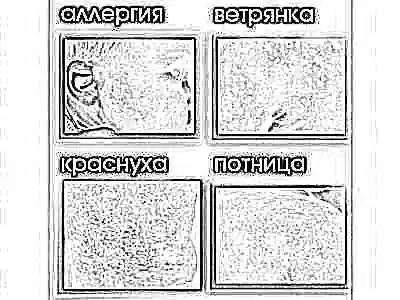
- Allergic pathologies. The appearance of red, rough spots on the skin is often a skin manifestation of an allergy. These elements appear when the body enters or is exposed to various provoking factors - allergens. These symptoms occur in children who have individual hypersensitivity to specific chemicals or foods.
- Atopic dermatitis. Causes bright red spots to appear on the baby's skin, which can cause severe itching in the baby. This pathology has a pronounced hereditary nature. If there is a family history, the risk of atopic dermatitis in a child increases several times.
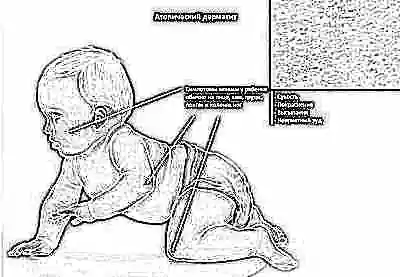
- Contact dermatitis. Every mother raising a baby can encounter this pathology. Most often, contact dermatitis occurs in infants under one year of age. It occurs as a result of an allergic reaction caused by some chemical substance. In children, the development of contact dermatitis is caused by using improperly selected diapers or wearing clothes made from synthetic materials.
- Skin pigmentation disorder. This condition occurs quite often in pediatric practice. It is characterized by the appearance of white spots on tanned skin. This pathological condition is associated with a violation of the content of melanin in the skin layers, the main pigment that provides normal coloring. The appearance of white spots on the skin after sunbathing should alert parents and motivate them to seek advice from a pediatrician.


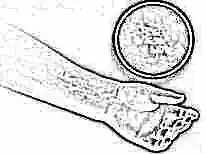
- Eczema. It manifests itself as the appearance of weeping pink spots on the skin, which can be located in different parts of the body. Most often, eczema forms in those anatomical areas that are most often exposed to provoking external factors. These are usually the palms and feet. The size of spots on the skin with eczema can vary.
- Seborrheic dermatitis. It can occur in various pathological conditions. Characterized by the appearance of yellow spots on the scalp. Another specific sign of the disease is a huge number of easily peelable skin flakes (dandruff). The peak incidence occurs in adolescence.

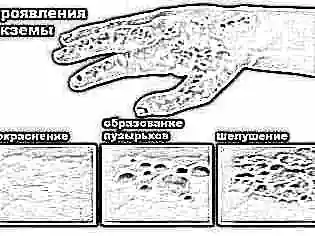
- Chronic diseases of internal organs. Liver pathologies often manifest themselves as yellowish spots on the skin. When a child develops jaundice, all skin becomes uniformly yellow in color. The appearance of coffee and brown spots on the skin may indicate problems with the kidneys. Dark and bronze rashes can be the result of serious diseases of the adrenal glands.
- Parasitic infestations. During their life, helminths secrete quite a lot of different substances that have a toxic effect on the child’s body. Quite often, with helminthic diseases, various spots appear on the skin of babies. They can be of different colors and sizes. As a rule, such skin rashes are very itchy.

- Impact of adverse environmental factors. Severe hypothermia or contact with low-quality children's cosmetics often leads to the child's skin becoming dry. In some cases, various skin spots and rashes appear on it. Most often they look like light or red formations.
- Ichthyosis. This is a genetic pathology that is quite severe in children. The first adverse symptoms appear in a child already in early childhood. The disease is characterized by the appearance of grayish and white spots on the skin. These skin elements are numerous and resemble “fish scales” in appearance.
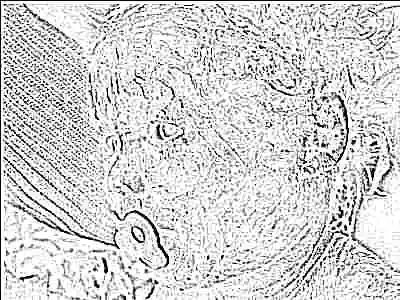
- Endemic diseases. In our country, infections that occur in children as a result of ixodid tick bites are widespread. These insects are carriers of dangerous diseases - viral tick-borne encephalitis and borreliosis. The appearance of a spot on the body with a bright red rim may indicate that the child has the first signs of Lyme disease.
- Prickly heat. This pathology is one of the most common in children in the first year of life. This pathological condition develops when the process of thermoregulation is disrupted, as a result of which the secretion of secretions by the sweat glands is disrupted. This pathology is characterized by the appearance of various red spots on the child’s skin, which can be quite large in area.
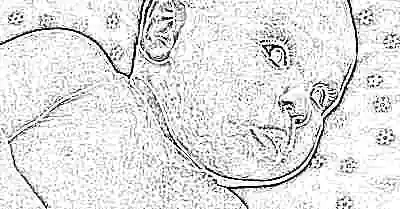
- Deprive Zhiber. Occurs after a child has had viral or bacterial infections. It appears as bright pink spots on the skin. The size of the skin elements is usually from 2 to 4 cm. The spots disappear from the skin on their own, without treatment.
- Fungal diseases. Causes white spots to appear on the skin. They arise due to the toxic effects on the skin of biologically active waste products of fungi. Fungal infection spots are usually round or oval. In some cases, they merge with each other, forming quite large areas of affected skin.
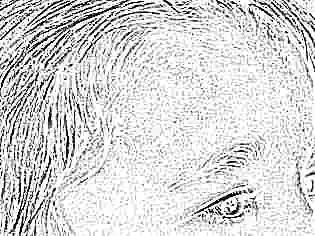
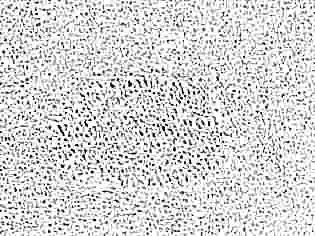
How do they manifest themselves?
The appearance of various rashes on your baby’s skin is a reason to consult a doctor. It is quite difficult to carry out differential diagnosis at home. Skin diseases are dealt with pediatric dermatologists. These specialists conduct a full clinical examination and examination of the baby, as a result of which they will be able to establish the correct diagnosis.
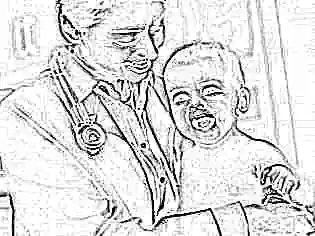
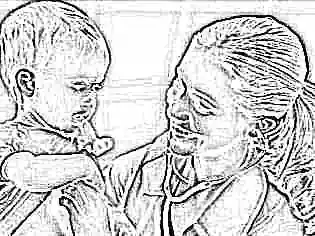
The severity of symptoms for different diseases may vary. The intensity of the color of skin rashes also differs significantly. At the height of the acute period of the disease, the spots on the skin become more intensely colored, then gradually fade. After cleansing the skin rashes, areas of depigmentation usually remain on the skin. They appear as white or light spots that disappear completely after a few weeks.
The localization of skin rashes may vary. With contact allergic pathologies, spots appear in areas of direct contact.

Infectious diseases are characterized by the appearance of skin rashes on almost all parts of the body: from the face to the heels:
- Appearance of white patches on the skin may be caused by vitiligo disease. This disease is characterized by the formation of fairly large white spots on the skin, but there are no other adverse symptoms. Usually the spots are irregular in shape and have bizarre outlines. Doctors consider this condition more cosmetic than pathological. Most often, the first symptoms occur in adolescence.
- Combination of skin elements and systemic disorders is very unfavorable and always indicates the presence of persistent pathology in the body. One of these diseases is tumorous sclerosis. This condition is congenital. It is characterized by a child’s lagging behind in physical and mental development, the occurrence of epileptic seizures, as well as the appearance of large spots on the skin that cover the skin on the hands and feet.
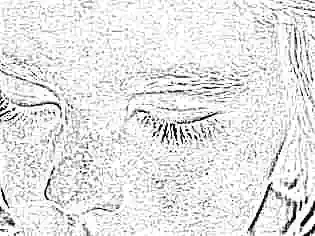
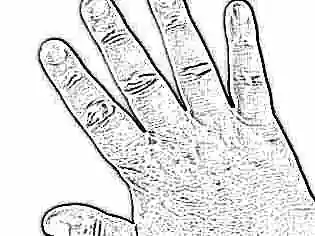
- Pale large spots can occur in children and with various pathologies of the immune system. Congenital or acquired immunodeficiencies are manifested by the appearance of fairly light areas on the skin. The highest risk group includes premature babies, as well as babies born during a complicated pregnancy. Congenital anomalies that lead to persistent metabolic disorders also contribute to the appearance of white patches on the child’s skin.
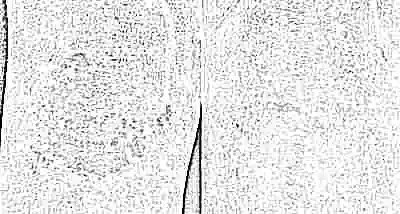
- Psoriasis - This is a fairly common dermatological pathology, which is accompanied by the appearance of various spots on the skin. This is a family disease that is inherited. As a rule, the first manifestations of the disease occur in adolescence. This pathology is characterized by the appearance of itchy spots, which can be located on the back, face, upper half of the body, knees and elbows. Psoriatic skin elements are usually red in color and quite rough to the touch.
Skin rashes can come in a wide variety of shapes and forms. This variety of clinical options makes it very difficult for doctors to establish the correct diagnosis. Quite often, in order to determine exactly the cause of the appearance of spots on the skin, a large complex of various diagnostic methods is carried out.
In complex clinical situations, a medical consultation is required, which is attended by specialists from various medical specialties.
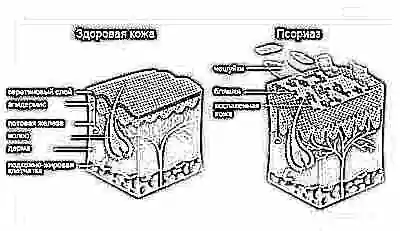
The duration of persistence of rashes on the skin may vary and depend on the cause of the disease, which caused them to appear on the skin. Red spots that occur as a result of various childhood infections usually completely disappear from the skin within 7-14 days from the moment the first rash appears. Fungal variants take a little longer. Skin manifestations of contact dermatitis completely disappear after a few days, subject to the mandatory condition that allergens do not enter the child’s body during this period.
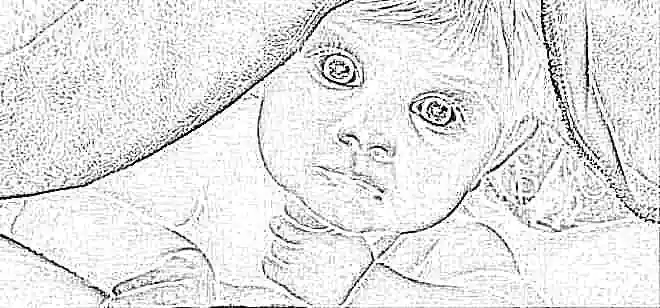
Recommendations
When pathological rashes appear on the skin, complex therapy is required. The treatment regimen is determined by a pediatric dermatologist after diagnostic examinations. The duration of therapy depends on the cause that caused the disease.
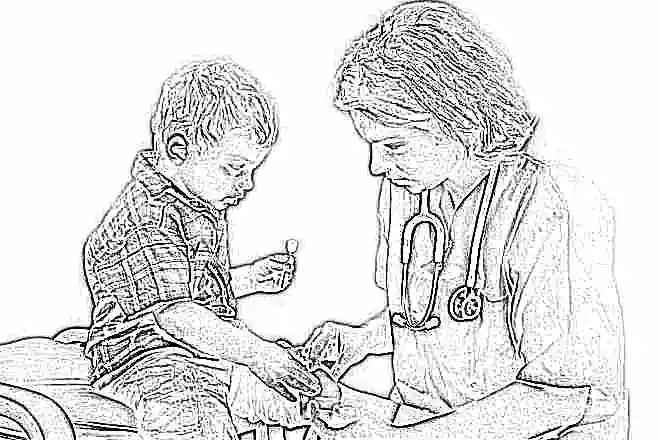
To remove various stains from the skin, you should use the following recommendations:
- Limit any contact with allergens. Following a hypoallergenic diet with the exclusion of highly allergenic foods is recommended for all allergic children without exception. Choose children's clothing made only from high-quality materials. Try to limit your child's wearing of synthetic materials.
- Choose children's cosmetics, which does not contain aggressive chemical fragrances and dyes. Pay attention to the labeling, which is always present on the packaging of this product.
For children who are prone to developing allergic reactions, it is advisable to choose cosmetic products that have a hypoallergenic composition.
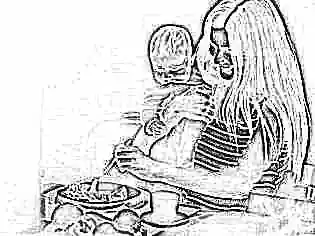

- Do wet cleaning more often children's room. Quite often, exposure to household dust causes various allergic red spots to appear on the skin of children. Regularly carry out general cleaning of the premises using disinfectants. They will help reduce the concentration of microorganisms in the children's room.
- Don't bathe your baby often. To maintain optimal skin moisture, it is very important to protect its water-lipid layer. Hot or long baths can cause the skin to become very dry and various spots appear on it. Carrying out daily hygiene procedures is quite enough to preserve and maintain clean and healthy skin.

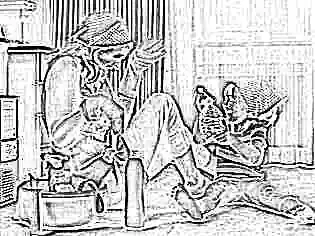
- Use herbal infusions when irritation appears on the baby's skin. Infusions prepared from string, chamomile or calendula are excellent for this. You can add them to the bath when bathing. These affordable products, always available in every home medicine cabinet, will be an excellent prevention of many dermatological diseases in children.
- Choose warm and comfortable clothes for walks. Do not over-bundle your child. This will only contribute to the fact that all thermoregulation processes in the baby will be significantly disrupted. Try to give preference to light, but at the same time warm clothes that will protect your baby from wind and frost.
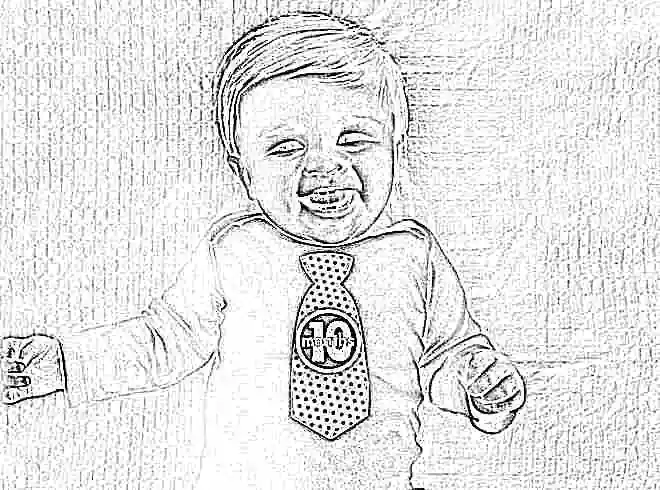
- Use for washing children's linen and clothes special household chemicals, which are approved for use in children. Many mothers, using the advice of older friends, wash with baby soap. This use is perfectly acceptable. Try to limit the use of any household chemicals that have a strong odor or are too rich in color.
- If you experience excessive dry skin use moisturizing creams and body lotions. Regular use of such products will have a beneficial effect on the skin. It will become more tender and moisturized. It is better to use moisturizing baby cosmetics after bathing your baby. After applying the cream, the product should be left on the skin until it dries naturally.
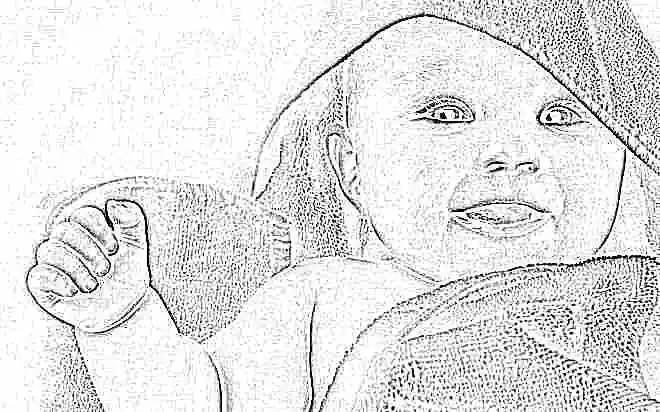
- For infants use diapers that do not cause any redness on the baby's skin and rashes. The selection should be made only taking into account the individual sensitivity of the baby. If, after removing the diaper, areas of redness or small red rashes appear on the skin, this is a characteristic symptom of an allergic reaction of the child. In this case, the brand of diaper should be changed.
- To eliminate adverse skin symptoms use different medications. It is important to note that before using any drug, you should always consult with your doctor. To eliminate spots on the skin caused by various reasons, the following are often used: “D-panthenol”, “Fenistil-gel”, “Bepanten” and others.



- Regularly get tested with your child from doctors if he has chronic diseases of internal organs. The long course of some somatic pathologies leads to the appearance of various spots on the baby’s skin.
Children with chronic diseases must be observed by specialists in the relevant fields.
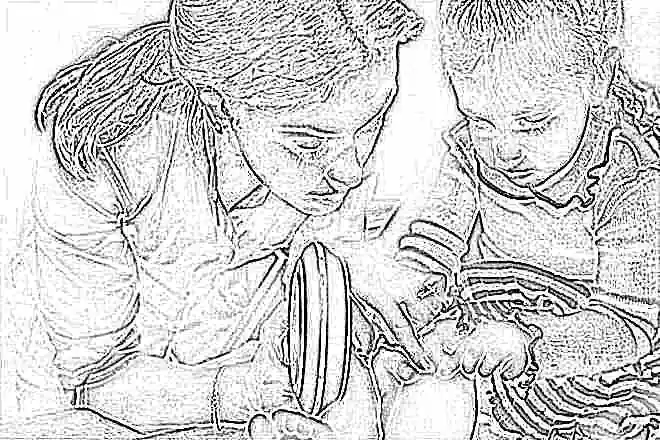
In the next video, Dr. Komarovsky will talk about the main causes of rashes and spots in children.



